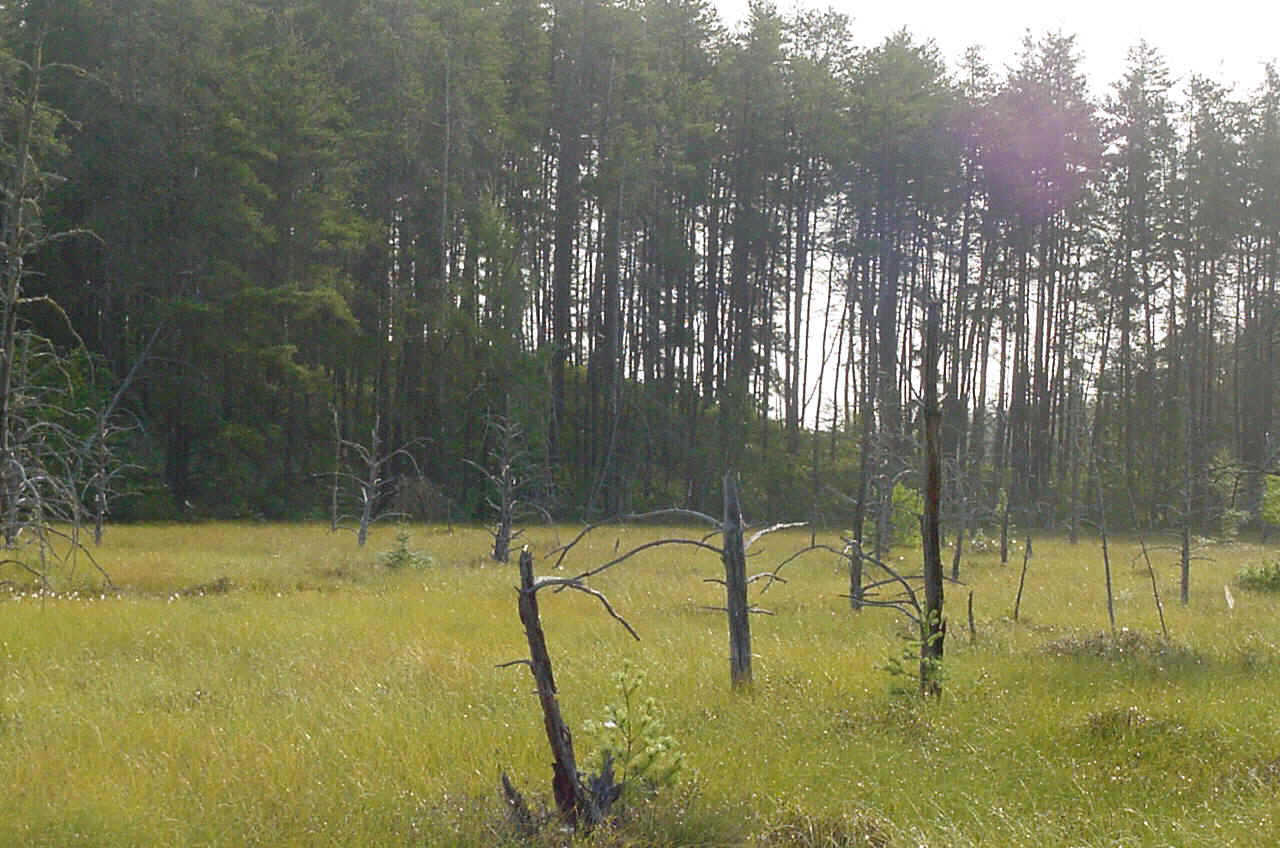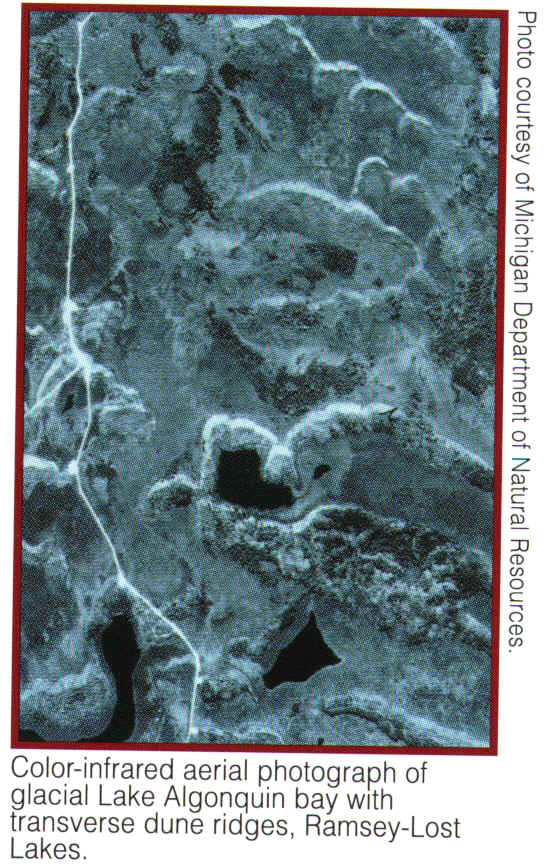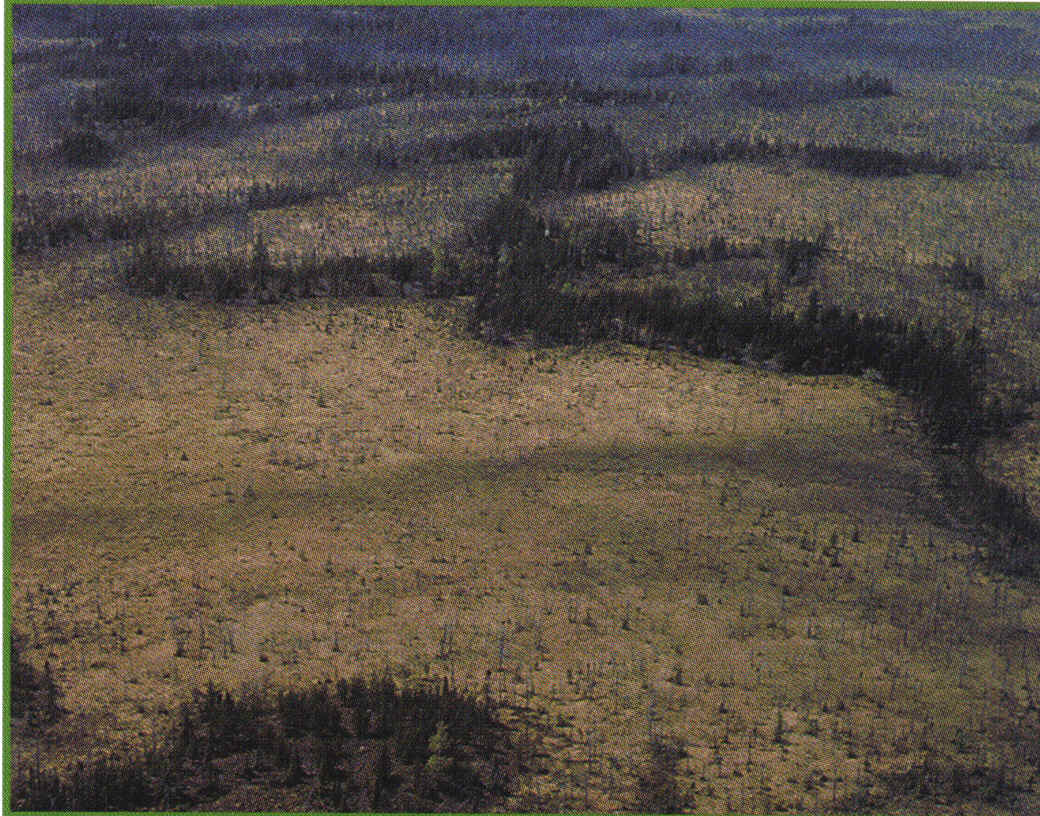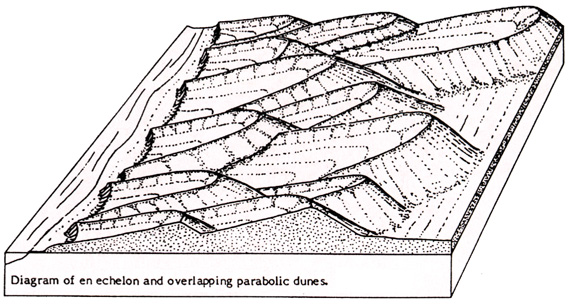Inland sand dunes are sometimes located up to 30 miles or more from the present day Great Lakes shore. These are older dunes that were formed by wind action some 4000-8,000 years ago. Inland dunes usually exist in the form of ridges, small hills, and knolls found on ancestral lake beds and outwash plains. The best developed inland dunes may be 30 to 40 feet in height and are found predominantly in the eastern UP and the Saginaw Bay area. Inland dune sand usually has a slightly higher silt and clay content, smaller, more angular grains, and a slightly differing chemical composition than coastal dune sand. In addition, being much older and not subject to as much wind and wave action as the coastal variety, these sand features are usually well stabilized with protective vegetative cover.
Michigan's sand dunes
occur primarily in two locations: along the western and southern shores of the Great
Lakes, and in flat, sandy, inland locations. Many of the larger inland dune fields
occur in areas that are now flat, wet swamps. The image below, showing a dune within
a bog, attests to the fact that the climate when the dune formed was much drier (and
probably warmer) that it is at present. The "bog dune" shown below is from
the glacial Lake Algonquin lake plain, in the
eastern UP.


This is what the parabolic dunes on the Lake Algonquin floor look like, from above (an
aerial photo).
Inland sand dunes tend to be smaller and less dramatic than the large,
prominent coastal dunes systems, such as those at Sleeping Bear Dunes, Ludington, or Grand
Sable. However, they are quite widespread and commonplace in the state. Their presence
implies that, at some time in the past, Michigan's climate was much drier and perhaps
windier than today.
Work continues today, by faculty at the MSU Geography Department, on
these dune fields. They have found that these dunes may date back to about 8000-10,000
years ago, when Michigan's climate was drier, and when the levels of the Great Lakes were
much lower. These two factors may have enabled inland sites that today are wet and flat,
to dry out and blow up into small dunes.
The image below shows some recently-deforested dunes in Midland County.
Seen from above, the dunes (forested in image below) are easy to spot.

Most of the inland dune fields in Michigan are parabolic dunes, formed on a surface
that has sand but only a little vegetation.
The sand is allowed to blow, creating a blowout area where no vegetation was available to
hold it down. Most of the dunes on the lakeshore areas are simply "seas"
of parabolic dunes, as shown below.

It is thought that most of the inland dunes in Michigan formed when these flat, sandy surfaces were devegetated (probably by fire and drought), allowing strong westerly winds to heap the sand up into parabolic dunes.
This material has
been compiled for educational use only, and may not be reproduced without
permission. One copy may be printed for personal use. Please contact
Randall Schaetzl (soils@msu.edu)
for more information or permissions.